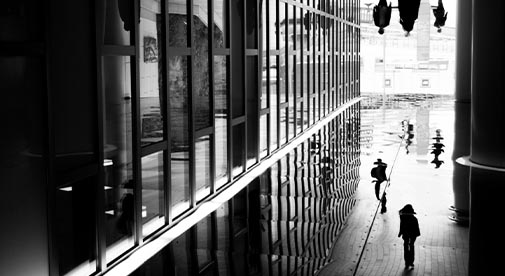We’re all familiar with the gritty, in-your-face New York City street scenes that seem to dominate street photography. Therefore, Bali is not exactly the first place that comes to mind when talking street photography…but maybe it should be!
First of all, what is street photography?
With no clear-cut definition, street photography is the art of capturing life and culture in a beautifully spontaneous and candid manner, intending to tell stories and reveal the spirit of humanity.
Which brings me back to Bali. Set in a much quieter, more manageable environment, Bali offers a multitude of cultural interactions with everyday local people, enhanced by backgrounds of natural beauty. Everywhere you turn there are beautiful people doing interesting things.
Daily life in Bali revolves highly around spiritual beliefs. In fact, every home has a private temple, every morning an offering is made for good blessings, and the statues and trees wearing sarongs are believed to house good spirits. The conviction and dedication behind these spiritual beliefs make it easy to convey the story through each image.
Other opportunities sure to leave any photographers’ lens spinning are Balinese traditions…including stunning clothing, exciting ceremonies, and bizarre rituals. It’s very humbling to be so unequivocally welcomed to connect culturally through these open events. And they make for great photo opportunities.

Much like their dedication spiritually, the Balinese people are some of the most disciplined and hardworking. From the monkey caretaker, to rice farmer, fisherman, or artist, there is no shortage of opportunities for outstanding occupational photography!

Here are my top 10 tips for getting better street images…no matter where you are:
1. Don’t be scared, a smile goes a long way. Be confident. Don’t hide (that’s creepy).
2. Don’t feel like a great image must intrude in someone’s personal space. Capturing crowds, using a person for scale, or even just including body parts can make for equally impactful photographs.
3. Have your camera ready (in hand or hanging around your neck) because the best shots often come out of nowhere.
4. Tell the story. Find the emotion. Connecting with the eyes, finding interesting body language, and capturing action are good places to start to help build the story.
5. Don’t set out for perfection. Street images are not all technically perfect.
6. Take a lot of shots and work the scene. Don’t be afraid to fail. You will learn what works and what doesn’t by comparing different angles and perspectives.
7. Play around with your camera. Change some settings. Try your shots with motion, freeze the movement, try differentangles, use a shallow depth of field, nail the whole scene in focus, take some out of focus. Just play!
8. Consider shooting in black and white, or experimenting post production. This can help tone down backgrounds that are too colorful.
9. Find a great scene, stop and set up a shot, then wait for the right person to walk into your scene. It is much less stressful and an easier way to manage your composition.
10. Know the laws and your rights where you want to photograph. Generally speaking, in Western countries, if the photographer is on public land, they are free to photograph most subjects. But you will need to make sure for your specific project.
[Editor’s Note: Learn more about how you can fund your travels and make an extra income with photography, travel writing, blogging, and more in our free online newsletter The Right Way to Travel. Sign up here today and we’ll send you a new report, Three Fun Ways To Get Paid To Travel: A Quick-Start Guide, completely FREE.]


